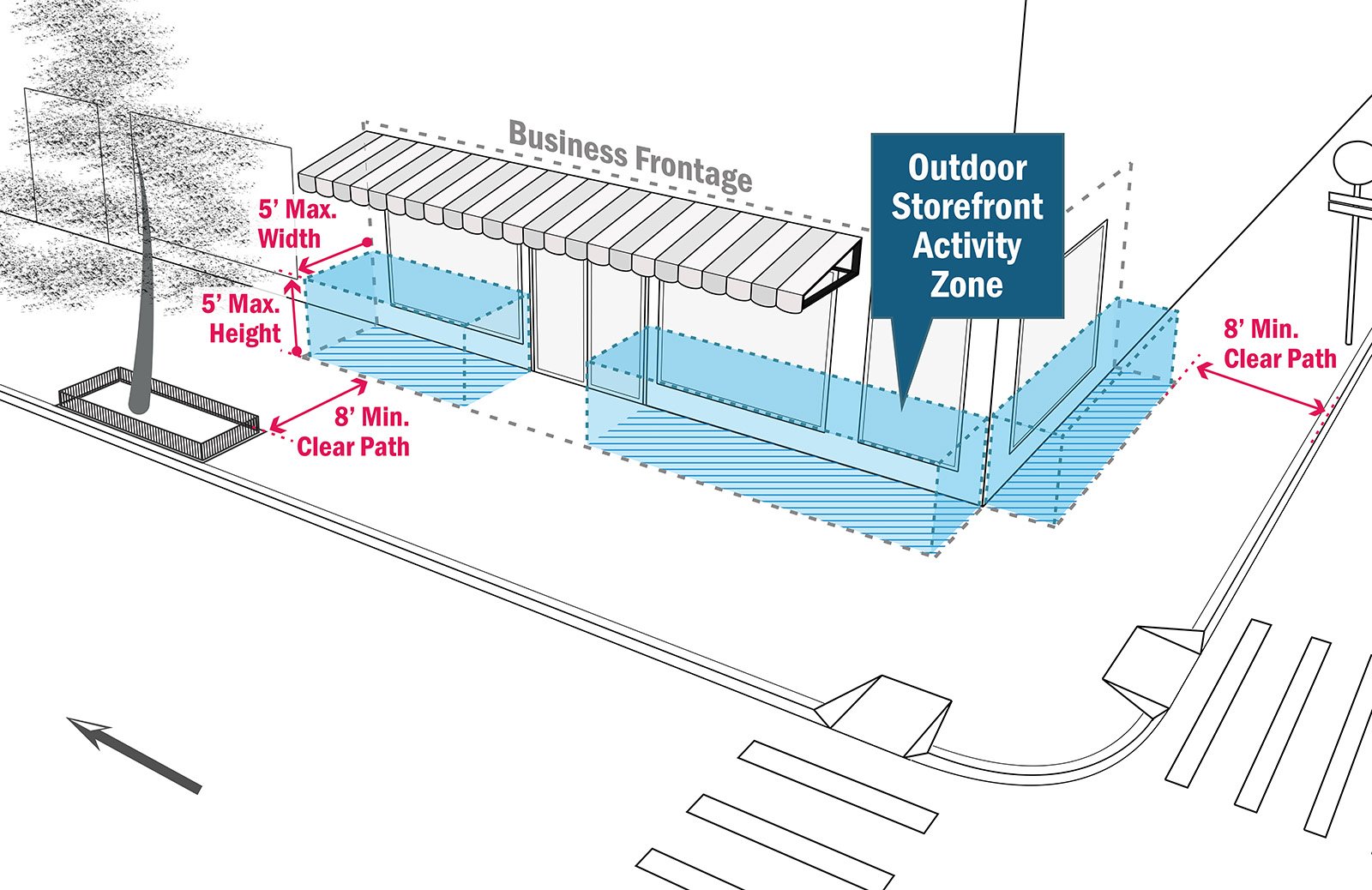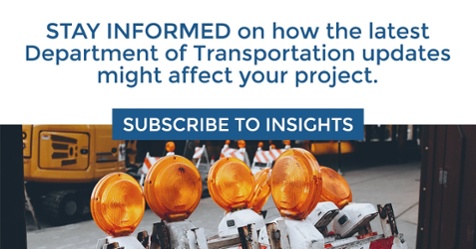As the pandemic reshaped life around us in 2020, NYC was quick to adapt to impacts like no indoor restaurant service and soaring bicycling rates.
The result was the launch of Open Streets and Open Restaurants. The programs have been widely hailed as successes for implementing outdoor dining spaces and expanding protected bike lanes, among other initiatives that allowed New Yorkers to enjoy the outdoors while still remaining safe and socially distanced.
Now, the City is relying on a similar program that aims to support commercial businesses by allowing street-side shopping and outdoor stalls.
Let's take a closer look at Open Storefronts, how the program works, which businesses are eligible, what permits are needed, the stipulations for participation, and how this trend is taking hold across the country.
What is Open Storefronts?
The Open Storefronts program, which began at the end of October 2020, allows existing ground-floor storefront businesses to use outdoor areas on a temporary basis to display merchandise, sell goods, complete transactions, and provide waiting areas. Open Storefronts enables commercial activity to take place on sidewalks, on roadways through the Open Streets: Restaurants program, or a combination of both.
The program is estimated to affect more than 40,000 businesses and support more than 450,000 employees during challenging economic times as the City and country deal with the pandemic.
"Outdoor space has been a lifeline for bars and restaurants, and there's no reason why our city shouldn't give retailers space outdoors as well," said NYC Council Speaker Corey Johnson. "Open Storefronts ... will continue our City's reimagining of how we use our street space to help businesses and New Yorkers get the most out of our streetscape."
Though the program was initially slated to cease at the end of 2020, Mayor De Blasio recently announced it would be extended through September 2021 and expanded the program to include bars and restaurants.
What businesses can participate?
Any ground-floor storefront business — defined as a storefront that "is directly accessible from the street and has store frontage on the sidewalk" — is eligible to participate in Open Storefronts.
Primarily, this includes businesses in retail trade (clothing, electronics, health and personal care, etc.). Repair stores, personal care services, and dry-cleaning and laundry services are also able to use outdoor space for seating, queuing, or display of dry goods.
Additionally, restaurants and businesses that sell pre-packaged food on sidewalks are eligible to participate.
What commercial activities are allowed?
Open Storefronts allows for businesses to use outdoor space for retail trade, seating, queuing, or display of dry goods. Under the program, businesses must follow the rules outlined below:
- Build specified temporary signage (i.e., A-frames).
- Place seating, ropes/stanchions, collapsible umbrellas and tents in eligible sidewalk and roadway areas.
- Must not sell any goods the business is not already licensed to sell indoors.
- Must not use amplified sound.
- Prohibited from using the fronting sidewalk or roadway of another business (except for restaurants that were granted permission to do so).
Businesses participating in Open Storefronts are also obligated to suspend outdoor operations when a DSNY Snow Alert is in effect. They are responsible for bringing in all furniture and goods when closed.
What are the physical stipulations?
 |
| Image Credit: NYC Department of Transportation website |
Siting Criteria for Sidewalks
All sidewalks wider than 8 feet may be utilized by the Open Storefronts program in accordance with siting criteria. This is because the program requires that any outdoor commercial activity must leave an 8-foot path clear for pedestrians. Furthermore, the program also stipulates that:
- Commercial activities and outdoor objects are restricted to a bounded zone that is no more than 5 feet from the property wall (i.e., from the external facing wall of the business) and no more than 5 feet in height.
- Outdoor objects must be placed against the wall of the business (or as close as possible), and at least 3 feet from the adjacent restaurants or 1 foot away from other businesses participating in the Open Storefronts program.
- Outdoor objects and goods cannot block subway grates, fire hydrants, utility hardware, Siamese water connection, bus stop waiting areas, subway entrances, fire exits, doors used for exit or entry, driveways, garage entrances, or vault entrances not exclusively accessible by the business (unless blocked in coordination with other tenants).
- Eligible businesses that can currently display merchandise as-of-right or with a stoopline stand license can continue to do so under existing regulations and do not need to certify under Open Storefronts for the existing eligible merchandise.
- Collapsible tents and umbrellas with weighted base must have at least two (2) sides open and must be installed per manufacturer’s instructions. A single area or area of combined / tied together tents and umbrellas should not exceed 400 square feet in size.
- Tents and umbrellas are prohibited from being used during inclement weather such as high wind.
Siting Criteria for Restaurants Corridors
- A 15-foot emergency lane must be designated to allow for emergency access at all times. Bike lanes may be included in the designated lane.
- Roadway objects must be sited at least 15 feet from a hydrant and 8 feet from a crosswalk and may not be placed outside the width of the storefront.
- Businesses must define their activity area with some type of barrier element and remove the barriers at the end of each day.
- Store merchandise cannot be taller than 5 feet (measuring from the top of the sidewalk).
- Collapsible tents and umbrellas with weighted base must have at least 2 sides open.
- A single area (or area of combined tents or umbrellas) should not exceed 400 square feet in size.
- Tents and umbrellas should not be used during inclement weather such as high wind.
- Outside of barriers, permanent structures cannot be built or placed on the roadway.
How do businesses apply?
All businesses are allowed to self-certify that they meet program requirements. Thereupon, they can submit an application online; all approvals are taking place online.
Submission is an acknowledgment that the establishment understands and agrees to all applicable terms and conditions and all applicable laws and guidance. Noncompliant establishments may have their authorization to use sidewalks revoked or suspended.
Additionally, the DOT may immediately revise, terminate, or suspend authorization, for a period of time and without prior notice, the outdoor area usage based on valid complaints, lack of ADA access, need for repairs, or for any other reason.
Are similar programs in effect elsewhere?
New York City is not the only municipality that has pursued innovative solutions amid the ongoing pandemic. Our partners at Permit Advisors have assisted many retailers in obtaining outdoor space permits on the West Coast through programs such as San Francisco's Shared Spaces. Similar to NYC's Open Storefronts, Shared Spaces allows businesses to use sidewalks and parking lanes for commercial operations, such as retail use, seating or dining, and socially distanced waiting areas.
Participation requires applying online for a free, temporary Shared Spaces permit, and the use of outdoor heaters requires applying for an additional Operational Permit through SF Fire. Similar to NYC, San Francisco's Shared Spaces program is subject to city shutdowns due to the COVID-19 pandemic. Refer to Reopening San Francisco for the latest updates on the city's reopening timeline.
Code compliance for outdoor spaces
 NYC's Open Storefronts and Open Restaurants programs aim to make it possible for city's many stores and restaurants to adapt their physical spaces and business operations in order to survive the COVID-19 pandemic. However, as updates and modifications to the program rules continue to be made to protect public health, it is important to stay on top of regulatory changes to ensure your business remains in compliance.
NYC's Open Storefronts and Open Restaurants programs aim to make it possible for city's many stores and restaurants to adapt their physical spaces and business operations in order to survive the COVID-19 pandemic. However, as updates and modifications to the program rules continue to be made to protect public health, it is important to stay on top of regulatory changes to ensure your business remains in compliance.
If you have questions about whether or not your outdoor space requires a specific DOB, DOT, and/or FDNY permit or meets current code compliance regulations, contact Milrose for assistance today.







